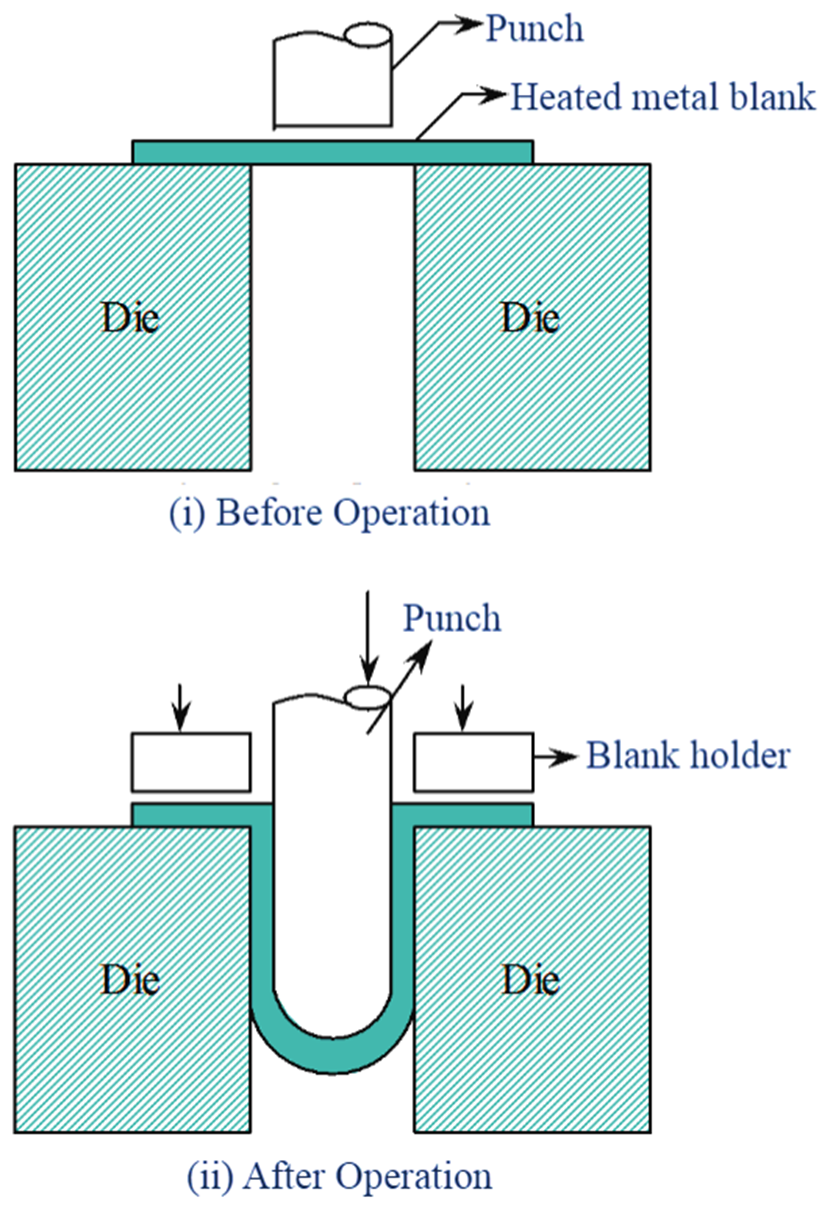
Figure 1: Deep Drawing.
It is the process of making cup-shaped components from flat sheet metal blanks known as cup or radial drawing. Initially, the blank is heated to plastic state and it is placed over the die as shown in figure 1. When the force is applied by the punch, the blank descends and the punch pushes the metal through the die to form a cup shape. During this process, the depth of metal becomes one or more times the diameter. Deep drawn components used in milk churns, washing machine tubes, etc. During operation, elongation and thinning should be avoided as it may result in crinkling or rupture of the metal and further reduction in diameter may cause crack formation. The important variables involved in the deep drawing operation includes friction, squeezing force and formability of the metal blank.
Advantages of Deep Drawing
- Similar to stamping operation, deep drawing utilizes single piece blanks.
- It produces components with deeper shapes.
- Seamless tubes and cylinders can be made easily, especially used for thick-walled cylindrical tanks.
- This operation reduces cost of tooling and its equipment.
Applications of Deep Drawing
- It is widely employed in the automobile industries for producing automobile bodies, cylinders etc.
- It is mostly used in electronic and mechanical components.